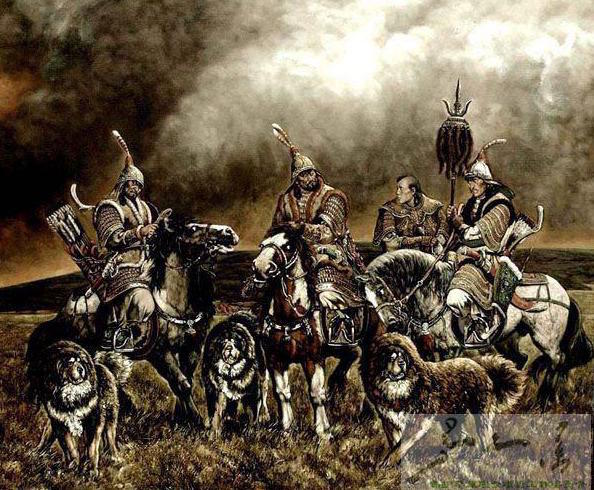
Timujin had a rough start even before he was conceived. Born of a mother who’d been kidnapped by his father and forced into marriage, he grew up surrounded by squabbles, unpredictability, and violence. His father was poisoned by enemies before Timujin turned ten, and then his own extended family dumped him, his mother, and six brothers and sisters to avoid having to care for them (but only after they stole everything they owned). As if that wasn’t enough, the same extended family later “snatched and grabbed” him to get free labor out of him.
Payback, if you’ll pardon our French, is a b*!ch.
Temujin escaped that miserable life, killed his older half-brother over food, and took over as head of the poverty-stricken household – and he turned his life around. He married, had at least four sons and daughters, and started networking with other families. He earned a reputation as a warrior, and the people who followed him grew exponentially. His growing empire included all faiths, and in a move radical for its time, he didn’t insert family relatives in positions of power, but only those individuals who could do their job, even if they were former enemies. Like a scene out of the film, The Godfather, Temujin eventually called for a meeting of all the heads of the various families and established a bigger “territory.”
Radical stuff for the 13th century.
His people would go on to call him “Chinggis Khan” (or “Universal Ruler”), a name that became known in the West as Genghis Khan. Sure, he was known for his “campaigns,” and his reputation as a feared invader was justified if historians are correct in their estimation that he and his horde killed some 40 million people. On the other hand, he introduced radical concepts to warfare and nation building that we use today: He practiced merit-based government, and encouraged religious tolerance. He created one of the first international postal systems, and established stable trade routes where, it was said, a young woman could ride from one end of the empire to the other without being harassed because trade was that important to the Mongols. By the time he died from internal injuries after being thrown from a horse, Genghis Khan had conquered more than twice as much land as any other person in history, and brought Eastern and Western civilizations into contact with each other in the process.
And finally, we get to the dogs. Genghis Khan’s “miraculous army” included huge dogs that he took along on war expeditions. They were launched in charges against the ranks of the enemy, and used as dispatch carriers. Legend has it that two of these enormous dogs marched with every company of Genghis Khan’s army for the expressed purpose of being sentries, not attack dogs. These canines were the ancestors of the breed we know today as the Tibetan Mastiff.
One amazing legend about these dogs is that Genghis Khan once led thousands of Tibetan Mastiff “soldiers” to conquer Western Europe. The writer, Yang Zhijun, made specific mentions in his book “Tibetan Mastiffs” about the legend. “Genghis Khan’s ‘fierce dog troops’ included 50,000 soldiers which were all Tibetan Mastiffs. They would feed on the bodies of enemies, march invincibly, and performed exploits that deeply shocked and satisfied Genghis Khan.”
Who can say with certainty if this was true, but it’s more assured that the Tibetan Mastiff is believed to be one of the oldest breed of dog still living, and that it likely lent its DNA to other Mastiff breeds outside its native land, including the Mastiff, St. Bernard, and others.
None of us will ever be able to claim Genghis Khan as a BFF, but the next time you pet a Tibetan Mastiff, know that you are petting a living creature that’s the closest you’ll ever get to the Great Kahn.
Image found on Pinterest and happily credited upon receipt of information.

I am proud to say our 4-H club had the first Tibetan Mastiff in the program. He was a real gentle giant.
How wonderful to have such an uncommon breed in a 4-H program, Cathy! We bet the kids loved him!
i have got a mastiff andaluc its quiet obvious his genetics are not mediterian,i have heard that their genetical history comes from the mastiff of the time genghis khan is this true
Neil, we honestly don’t know because we’re not aware of an Andaluc Mastiff (Unless you mean an Andalusian Hound or Spanish Mastiff?)